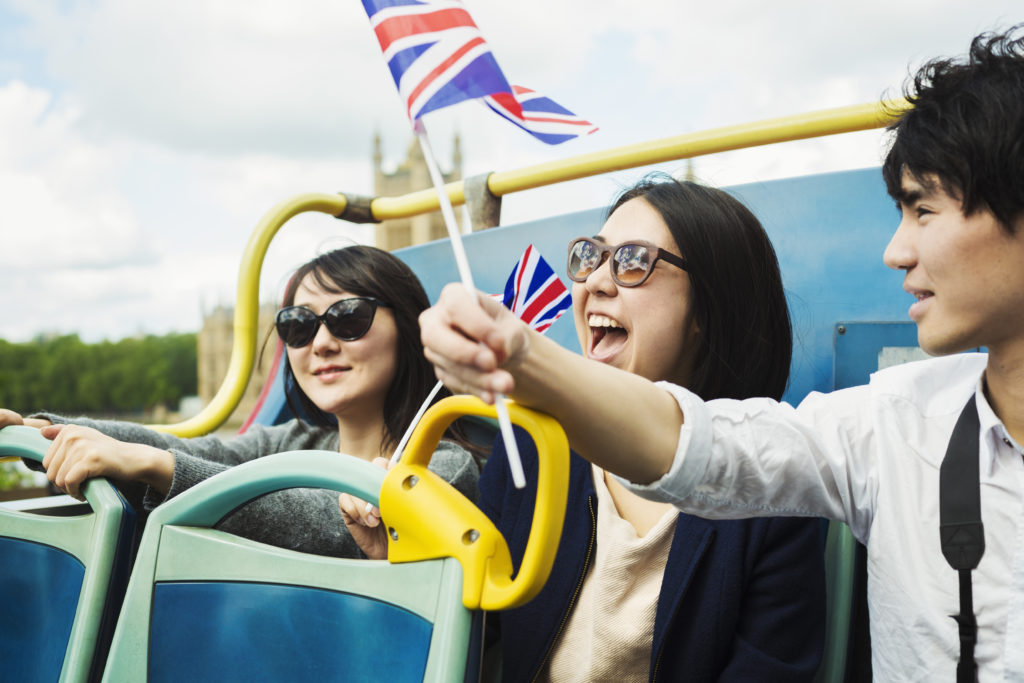Use a B2B travel incentive program to meet your customer and sales performance goals.
In Engage Magazine issue 1, we listed our top recommendations for B2B points-based incentive and reward programs (Part 1). Business pain points can be reduced by offering incentives to change target audience behaviour.
In this article we turn our focus to the different ways and crucial elements for the set up of non-points-based incentives, like travel based incentives, leader boards, and reward programs.
Due to the global pandemic, travel has been on hold for the past 2 years. However, now borders are reopening, travel incentives are once more emerging as the preferred option for reward and B2B incentive programs.
If you don’t already have a B2B travel incentive process in place, here are two reasons to get started:

Below, we have described our most important steps when designing a successful incentive travel program.
Our list covers both the strategic and design elements of successful travel incentive programs. Some argue that the destination, inclusions, events, experiences, and logistics are the most important part of a travel incentive design. However we at 212F respectfully disagree!
Having a realistic and achievable program design is critical to incentive program success, and should . . .
Failure to include these items in your travel and reward program could lead to it being mistaken for a luxury expense instead of a viable solution to a business pain point.
Having a “solve our pain” philosophy is fundamental to 212F’s strategic approach to travel incentive design and marketing. In the list below, we have not listed our recommendations in any particular order. As every business is different, some of our points may not be relevant to your unique business need or industry. Consider this list as a guide to where opportunities or potential barriers may exist within your own travel reward design.
Using a leader board or target structure may seem automatic when designing a travel incentive program. However, using them will focus recognition and reward around sales processes.
Top performers, who have contributed the most, will love being recognized for their effort. A leaderboard structure will help you manage budget and group sizes by determining and identifying the top ranking winners. This will in turn incentivize others to generate more revenue for your business.
Incentives work hand in hand with performance. Reward program participants who achieve stretch goals with VIP access or special treatment.
Knowing who your evangelist customers are will help you focus your attention on your biggest customers. Offer additional value for their loyalty and repeat business with extra networking, rewards, or personal development opportunities. A travel event or incentive can offer all of these, be they incentive, study tour, or executive education.
Set targets for success
Targets drive new and innovative travel incentive design. However, setting a target that increases by 10% year on year is the lazy way to design a travel incentive. It does not allow for nuances in your sales cycles or target audience personalisation.
Things to consider:
Offering target personalisation will drive higher B2B travel incentive performance and greater success to resolve productivity pain points for your business.
Targets stop you from rewarding underperformance. Sales-based targets are often set at a level to fund the travel cost within the target itself. This way incoming revenue covers the outgoing costs of the travel incentive.
If your travel reward program is based on sales-based targets then success = growth.
When designing targets, look beyond simple sales figures. Set sales goals to unlock additional bonus rewards or trip inclusions if your target audience achieves key product family volume targets. Support your overarching sales goals by adding additional participant rewards when they reach value-add targets in additional areas of focus.
If you want to change behaviour that is not directly linked to sales rep performance, consider adding eligibility criteria. Qualification benchmarks will help drive business outcomes when you cannot define an incentive cost. Designing a target that awards sales success via eligibility criteria will influence behaviour and remove financial pain points across the board.
Stretch sales goals by including leading behaviours or sales KPIs into your travel incentive design.
For sales teams focus on calls to proposals to deals to calculate the actual sales value of the product or service.
Our message for target setting:



Like any points-based B2B rewards program, data plays an important role in tracking participant activity and behaviours.
Tracking and displaying leaderboard progress and sending relevant communications needs the same precision as other sales insights require. Without getting too granular, use data to drive behaviour, sales success and ultimately annual revenue goals.
Frequency is a priority when you are tracking targets on a leaderboard. Tracking criteria should include a frequency component, like website visits per month, engagement on social media, or number of email opens. Remember, an engaged target audience leads to program success.
Also, competition or personal success is only as good as the changes and updates recorded in the tracking functionality. The more frequently you can update sales results to your target audience, the better. Engaged participants will want to compare their performance and ranking with top ranking participants. Doing this will show them what they need to do to reach the top of the travel incentive rankings.
Accuracy is paramount in any target tracking. A participant must be confident that their sales results are represented correctly on a target or leader board. Any errors in your data will have a direct affect on their personal success and could undermine your entire rewards program.
If someone misses out because of inaccurate data or tracking, the reputation of your incentive and rewards brand could suffer. If your data is complex, we recommend you take the time to get it right first.
Strategic Event Design is more than simply throwing a travel destination into your reward mix. A common mistake is to focus on the destination, instead of putting your company and program brand first.
It is vital you create a brand that people will remember and associate with a positive experience. What you want to hear is “My Reward program for travel is unforgettable”, rather than, “My trip to Queenstown was great.”
A destination-led focus will produce issues that will span several areas of your business.
• Increased Budgets – Certain destinations can be expensive. If you are trying to outdo a competitor’s destination your budget may increase. If so, your targets will also have to rise to cover the higher cost. Focusing on your strategic event design will help keep costs down.
• Growth Targets – Including growth targets in your incentive design will increase sales and share of wallet beyond the set target. If you don’t, your target audience will simply move to the next competitor incentive they see once the target is reached.
• Messaging – Do not lose control of the reason a program exists. You cannot effectively promote your incentive brand benefits while the conversation focuses on the destination.
• Budget Creep – Trying to outdo the last program with the same budget simply won’t yield results. This encourages you to cut corners while damaging your program brand, undermining the entire point of your travel program.
• Easily Replicated – If a destination is the central selling point of your program, your proposition can be easily copied by competitors. Destination marketing focuses motivation and sales achievements on the travel destination. This is not why you want to do business with them. You want them to connect their efforts with brand loyalty, to ensure their eyes don’t wander to a competitor program.
Focused strategic event design gives greater flexibility and choice. This will help you adapt your incentive strategy while still retaining the trophy value of your program. Make the conversation about your brand and your incentive program design, not where participants might be flying off to next.
When designing a travel incentive, it is easy for stakeholders, particularly executives, to get involved in the destination decision. However recommendations from executives need to be assessed against the target audience themselves. Otherwise you may not hit revenue targets with your travel incentive program.
The event or incentive destination should be driven by your understanding of what is meaningful to your target audience. Some participants may hold the destination and itinerary at a higher value than others.
Also, what is relevant and proportional yesterday may not be today. Post-COVID market challenges may have dampened your target audience’s enthusiasm for a trip to Italy. Such travel concerns or personal budget limits can affect travel program results. In contrast, regional COVID-safe options such as Japan, the Pacific Islands, or Singapore may be more appropriate at this time.
Evaluating proportionality is more important than where the executive team members want to travel next.
The two most important elements in your strategic travel incentive design are budget and expectation. This is also known as knowing where you can travel and what you can do with the budget you have.
Participant expectations are important things to consider when you are deciding on a desirable destination. We have seen many travel incentives for customers maxing out on trip inclusions that push the entire incentive program over budget.
Avoid overspending on the destination when you have a limited budget. Enhance your “beer destination” by building in more sales targets that allow participants how to unlock bonus activities and inclusions.
We find participants prefer limited inclusions and majority free-time when they go on a trip to some “sexy” destination. Keeping the group together and connected is far more important than giving them an opportunity to wander off on their own.
The reputation of your travel incentive program brand is critical to the success of your incentive offer. Overpromising or disappointing your leader board winners can damage your incentive program reputation. Never sell a “luxury all expenses paid” reward, if you can only afford to offer limited activities or dinners. In their eyes reward experience ratings will plummet if they are pulling out their wallets over and over again.
This choice can also influence future target setting or ROI. Your future success will fail if the effort of achievement and success does not match the travel destination reward.
Use your budget to maximise participant experience while at your destination. This will create fond memories that will incentivize them to take part in the next reward target.
Research shows our memory can be biased and can also be tricked. Magic moments experienced while travelling create memories that last a lifetime. In other words, a travel incentive duration is not as important as the memorable moments that fill the days.



When developing your event model strategy, it is essential to consider your incentive budget before everything else
Fixed budgets give certainty to all aspects of the travel incentive program. A fixed budget will offer limited places or tickets. It will capture all known elements, but result in lost revenue or failure of the program.
A fixed budget allows for a set group size. But be aware once all places are filled participants could “switch off” and move to the next incentive program. This can result in potential lost revenue affecting the ROI of the travel incentive program.
Your reward program participants work their butt off to achieve their targets. To miss out on a place due to limited numbers will erode their willingness to participate next year. This will affect your sales revenue and share of wallet in the longer term.
Open budgets allow any number of the target audience to earn a place on a travel incentive trip. The cost of the program is usually built into the target. So, when a participant reaches the target they are also funding their own ticket. An open budget allows anyone to succeed, potentially increasing the success of the program and ROI.
Open or variable budgets do not place a cap on success. They continue to incentivize participants to sell more right up to the date of departure. It can also increase sales in subsequent years as participants who did not achieve their target try harder with each cycle.
An Open budget poses challenges around arranging the travel and event logistics, as flights and hotels have limits. So, it is always important to factor this into the program design before launching an open budget travel incentive.
Bottom line, for those who prefer absolute control there can be nothing worse than an open budget. But for those focused on results and outcomes, this is the dream budget!
There is no right or wrong budget type. Ask members open-ended questions to learn what they prefer. This will ensure your strategic event model is implemented correctly, both can result in huge success.
Control your budget
Those with travel incentive experience know budget control is critical to the design of a travel-based reward. Compared to other rewards, travel incentives and events require the highest budget to execute. To deliver a ROI, everyone needs defendable costs and quotes from the outset. These determine the target setting and overall experiences you can include in a trip.
Therefore, it’s crucial you choose vendors that offer no surprises or ongoing costs, which should begin at the RFP process.
RFPs that focus on costs can often experience budget creep as you go through the project. Vendors will trim a few things to provide a budget that matches the RFP. Trimming the offer does not necessarily mean these items are missed. They often sneak back in as padding or additional costs creating budget creep.
The longer the travel incentive design, the more likely extra charges will come into play. This will have a long-term effect on your overall ROI.
Take the time to ensure your brief and RFP includes executables, costs, and services. Nobody likes surprises during reconciliation.
Second Tier Rewards
If you have limited places, lean into the program brand and offer second tier rewards as part of the overall proposition. These could be more cost-effective options, such as merchandise rewards or branded cash or debit/credit cards. Allowing participants to choose the reward that means the most to them is what we call a connected offer.
Whatever you do, don’t delay notifying participants they have won the reward. Distribute rewards for the incentive program as close to the desired behaviour change as reasonably possible. If you wait too long, the motivation for continued success will fade.

Since travel incentives are aspirational rewards, collateral and communications should frame them as such. You need to tell a story of your program and the destination. Program engagement starts from launch and ideally has a single communication destination that your target audience uses to find out more.
Having a program with multiple touch points can be a detrimental experience for your customers. Focus on consistency and create ongoing engagement by removing friction points. A disjointed experience will have participants accessing different sites for program tracking, destination information, and for trip registration and travel documentation. Alongside consistency, program brand and key branding messages are also important.
Open budgets allow any number of the target audience to earn a place on a travel incentive. The cost of the program is often built into a target, so if it’s been reached, you know the ticket’s been funded. An open budget allows anyone to succeed, potentially increasing the success of the program and ROI. The challenge of an open budget is with the travel and event logistics. Flights and hotels have limits, so it’s always important to factor these into the design before launching an open budget.
Keep your target audience engaged by sharing a connected story and experience. This will keep them excited from program launch to basking in the afterglow of their reward experience on their return home.
A travel incentive should not be viewed as a single initiative. If you have an incentive brand, then that program should be part of your annual marketing calendar.
Share video highlights, VOX pops, and trip photos to celebrate the success of your travel program as it happens. More importantly, sell the incentive dream to your target audience for the following year. Building brand heroes and a community of top achievers will give you long term ROI.
The trade industry uses an annual catchup for customers and partners as a travel incentive program. This provides a great opportunity to reinforce value and brand heroes. Often it is trade spouses who drive buying behaviours as they want to ensure they get their free holiday each year!
Remember to do a pre-trip “famil” before you go live with a travel incentive program. This will give you the assurance that you’ve made the right choice for your target audience and program brand.
When you understand what the group will experience you will be able to produce better marketing and communications content. Make sure your briefing with your nominated agency is accurate. No one wants to be surprised when a program inclusion does not fit the demographics of the group.
Sharing demographic insights and travel outcomes will help create a successful framework. Remember to build in alternate options, suggestions, and creative ways to deal with problems. That way everyone has a great time while you build a strong incentive brand reputation.
Your on-ground experience needs to match the marketing hype of the travel incentive. It might seem a bit like advertising, but your trip needs to deliver the same amazing experiences your marketing describes.
Including key events in your travel reward itinerary can become iconic. But be aware participants will come to expect it to be delivered every time.
The most important part of a travel incentive program is building a community and relationship with your attendees
Set the ground rules for yourself and your staff as soon as possible. That way everyone knows how to engage the right people the right way. Remember, this is an attendee’s moment to celebrate their efforts. You hosting this experience is the single most important reason why you are with them on this trip.
Create a program rhythm and set expectations of your attending staff and the participants themselves. Schedule daily communications, travel itinerary updates, or SMS video links to build excitement. This sets the framework and ensures everyone is working towards (and enjoying) the same plan.
Identifying risks in your travel reward program is a big responsibility. Today’s practice of prioritising dollar value can encourage your team to cut corners. When it comes to managing risk, going direct to third party suppliers could erode your safety net for the whole event.
Specialised agencies have built strong knowledge and expertise that will give you access to their buying power and negotiation agreements. Their team has also built strong relationships with local and international suppliers, to offer better inclusions for your travel program. Their focus on the travel and event industry will give you more security than building your own incentive by going direct. Plus, agencies have COVID-safety plans and experience in risk management solutions.
Remember, it is only when something goes wrong, that an incentive travel agency like 212F will demonstrate their true value.
Full-service travel incentive agencies provide multi-destination services and have the capability to relocate events and guests at short notice. This is worth its weight in gold during an emergency. Incentive agencies have direct access to key suppliers at the destination. They can leverage this to make sure your group is the first to receive boarding passes home in an emergency.
So there it is, our top recommendations to consider when designing your next incentive travel experience. We’ve based our guide on 25 years’ design and execution experience. We focus on local and international travel incentives within the Australian and New Zealand markets.